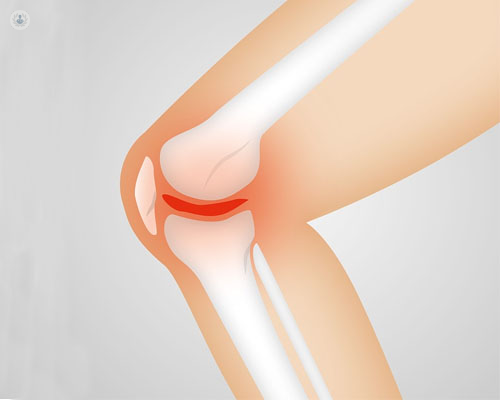Knee cartilage replacement
Professor Adrian Wilson - Orthopaedic surgery
Created on: 11-13-2012
Updated on: 06-13-2023
Edited by: Jay Staniland
What is knee cartilage replacement?
Knee cartilage replacement involves the replacement of parts of the cartilage that have been damaged as a result of specific injuries or arthritis. Normally, a local anaesthetic is used in cartilage transplant surgery, which is applied to the injured leg. The anaesthetist will discuss with you the best way to proceed, to make sure you experience as little discomfort as possible.

Why is knee cartilage replacement performed?
Cartilage replacement is mainly performed when there is cartilage damage to the ankle or knee. Normally, in high weight-bearing areas, pieces of bone and cartilage are directly implanted, or cartilage cells will be grown.
Cartilage is an important tissue that enables the joints to move. It covers the ends of the bones and has great capacity to support, distribute and transmit the compression forces to which the joints are subjected on a daily basis or during sports. The joint contact area is smooth at the ends and, in addition to the low friction of the cartilage, it is very well lubricated, thus reducing friction between surfaces. There is a downside to cartilage, however, as it has little or no capacity to repair itself in the event of a traumatic or degenerative injury, which leads to osteoarthritis and a loss of joint function.
The aim of cartilage transplantation is for the implanted material to be the same as the joint cartilage it is replacing, thus minimising traumatic degenerative injuries. The implanted material will integrate perfectly with the surrounding tissues in the joint and restore its friction surface.
What does knee cartilage replacement involve?
Cartilage replacement is performed using arthroscopy, i.e. through two or three small incisions of no more than a centimetre, which allows the orthopaedic specialist to access the joint. Using arthroscopy, the pieces of bone and cartilage will be removed from the injured areas of the joint and special material will be implanted.
In autologous cartilage transplantation, the damaged area is smoothed and the cartilage material which will be used in your knee is removed. This cartilage will be grown for around four weeks. After this period, the cultivated cartilage cells are implanted again in a second arthroscopy procedure so that they can grow and thus repair the lesion.
Preparing for knee cartilage replacement
Before undergoing a cartilage replacement operation, the orthopaedic surgeon must assess the severity of the injury. An X-ray scan will be the main technique used to diagnose traumatic knee injuries or severe arthritis. MRI scans may also be used to assess the injury. You must also inform the surgeon of any medication you are taking that might interfere with the operation. In addition, some preoperative tests will be performed to assess your health, such as an electrocardiogram.
Postoperative care
After the operation, you must follow the advice of the orthopaedic surgeon to ensure that the knee recovers properly. It is normal for the knee to be swollen after surgery, so you should keep your leg raised for the first few days. You can also reduce swelling by applying ice to the operated area.
It is also important to care for the incisions and keep them clean and dry. The specialist will tell you what to do and when you can shower and change the dressing.
The surgeon and the physiotherapist will also design a series of personalised rehabilitation exercises for your specific injury. These will progressively restore the flexion-extension movement and rotation of the knee, as well as strengthen the muscles.
Alternatives to knee cartilage replacement
The aim of the cartilage replacement operation is for the implanted tissue to perfectly integrate with the other tissues of the knee joint. In recent years, different procedures have been developed to repair cartilage injuries, such as the use of chondrocytes and stem cells, combined with biological therapies such as tissue engineering and gene therapy. This means that it may be possible to regenerate knee injuries in the future.













